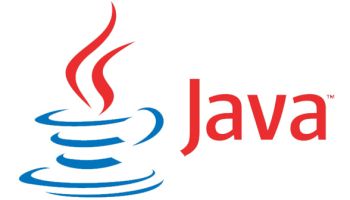Oracle has this week released updates to the standard edition of Java (Java SE 7 Update 4), as well as the JavaFX (JavaFX 2.1) rich client application platform.
This release marks Oracle’s first delivery of both the Java development kit (JDK) and JavaFX software development kit (SDK) for Mac OS X.
Java SE Update 4
Oracle is continuing to merge the Oracle Java HotSpot Java virtual machine (JVM) and the Oracle JRockit JVM into a converged offering that uses the best features of each of these leading virtual machines. With the release of Java SE 7 Update 4, all the performance enhancements available in Oracle JRockit have been merged into Oracle Java HotSpot and OpenJDK, the open-source Java SE implementation.
Java SE7 Update 4 contains numerous performance enhancements to the JVM, which can also deliver a performance boost to Oracle Fusion Middleware products. Java SE 7 Update 4 is fully supported and recommended for use with Oracle Fusion Middleware, Oracle officials said.
 “Oracle has aggressive plans for Java over the next few years, and we are continuing to drive technical advancements across the platform,” Hasan Rizvi, senior vice president of Oracle Fusion Middleware and Java Products at Oracle, said in a statement. “At JavaOne in 2011, we outlined our long-term road map for Java SE and JavaFX, and we are working closely with the Java community to meet our development milestones. With the upcoming Mac OS X port, we look forward to delivering simultaneous releases of the JRE across all major operating systems later this year, so all Java users will be able to take advantage of the latest features and security fixes.”
“Oracle has aggressive plans for Java over the next few years, and we are continuing to drive technical advancements across the platform,” Hasan Rizvi, senior vice president of Oracle Fusion Middleware and Java Products at Oracle, said in a statement. “At JavaOne in 2011, we outlined our long-term road map for Java SE and JavaFX, and we are working closely with the Java community to meet our development milestones. With the upcoming Mac OS X port, we look forward to delivering simultaneous releases of the JRE across all major operating systems later this year, so all Java users will be able to take advantage of the latest features and security fixes.”
Java developers can now download Oracle’s JDK, which includes the JavaFX SDK, for Mac OS X from the Oracle Technology Network (OTN). Oracle plans to release a consumer version of Java SE 7, including the Java Runtime Environment (JRE) for Mac OS X later in 2012.
Java SE 7 Update 4 will be the first consumer release of the Java 7 JRE, scheduled to be made available as the default version on Java.com starting 1 May, 2012.
Garbage Collection
The Java SE 7 Update 4 JDK includes the next-generation Garbage Collection algorithm, Garbage First (G1), which has been eagerly anticipated by the Java developer community, Oracle said. G1 provides predictable garbage collection even for very large applications.
The OpenJDK Community continues to host the development of Java SE 7 on Mac OS X and JDK 8, the prototype reference implementation of Java SE 8. Oracle has also started the OpenJFX project as part of its plan to open-source the JavaFX platform.
Meanwhile, JavaFX 2.1 introduces playback support for digital media stored in the MPEG-4 multimedia container format containing H.264/AVC video and Advanced Audio Coding (AAC) audio. JavaFX is a software platform for creating and delivering rich Internet applications that can run across a wide variety of connected devices. Rich client applications using JavaFX 2.1 are completely developed in Java. Customers and partners can leverage their existing knowledge of and investments in Java technologies to create modern, expressive graphical user interfaces and data visualizations in JavaFX.
JavaFX 2.1 also features new WebView support for JavaScript to Java method calls; this allows a user to render HTML/JavaScript and allows JavaScript (in WebView) to make calls to Java APIs to offload specific operations to Java. And the JavaFX 2.1 release adds enhanced font rendering for modern LCD displays with Windows-style LCD sub-pixel rendering.
Additional user-interface (UI) enhancements in JavaFX 2.1 include controls for combo box, stacked chart and application-wide menu bar.
JavaFX 2.1 is available now for Windows and Mac OS X. A developer preview for Linux is also available.
Oracle also is announcing a public early-access program for the JavaFX Scene Builder, a visual layout tool for the JavaFX platform. The JavaFX Scene Builder enables designing UI screens by simply dragging and positioning UI components from a palette onto a scene.
How well do you know your operating systems? Take our quiz.





